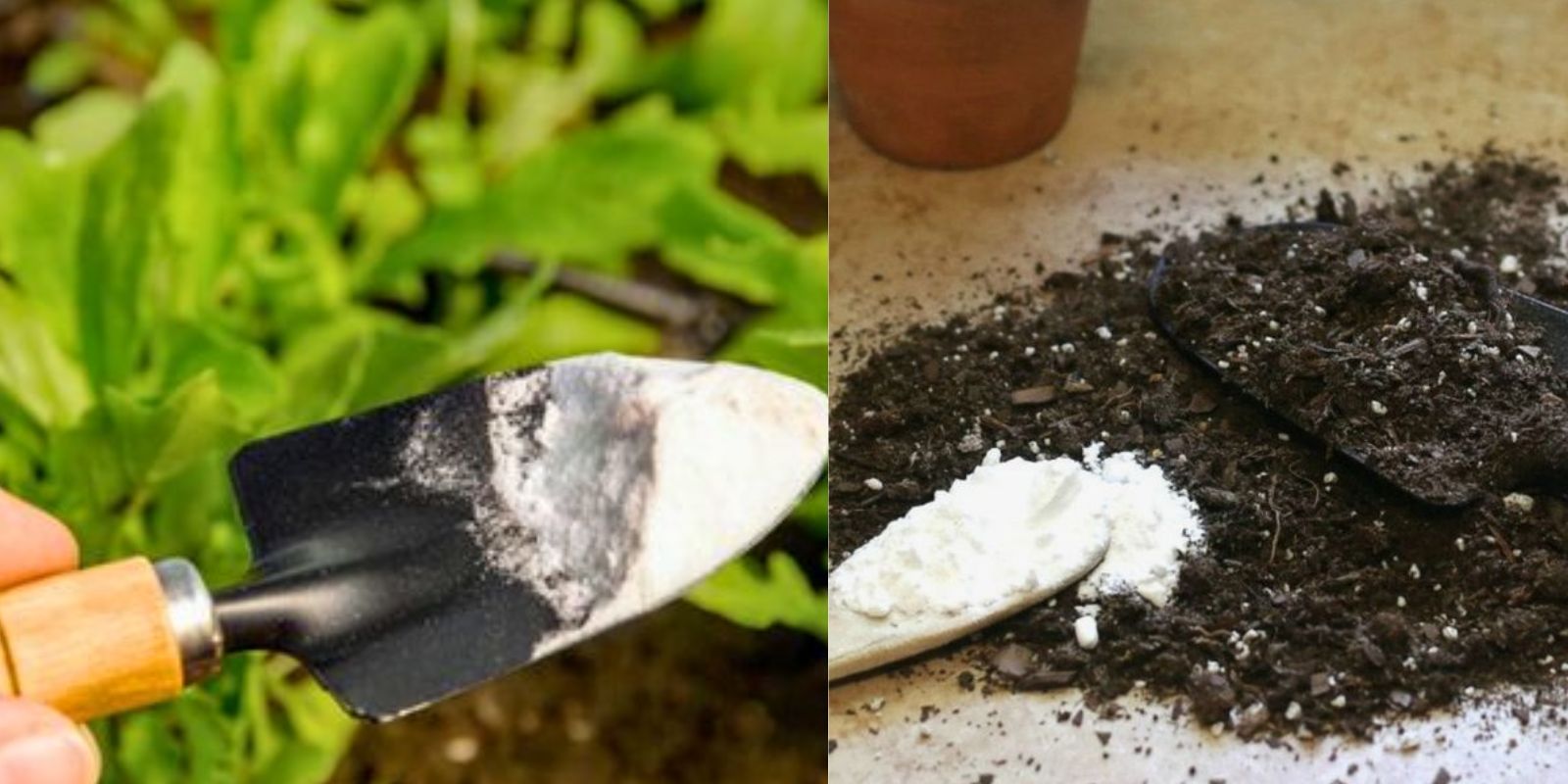Baking soda, a common household staple, is more than just a versatile ingredient for baking and cleaning. In the garden, it can serve as an effective, eco-friendly tool for managing plant health and enhancing your gardening practices. However, like any tool, it must be used correctly to reap its benefits without causing harm. This comprehensive guide will explore the best ways to use baking soda for your plants, along with crucial tips on how not to use it.
Best Ways to Use Baking Soda for Plants
1. Fungal Control
Overview
Baking soda is an excellent natural remedy for managing fungal diseases in plants. Powdery mildew and other fungal infections can be detrimental to plant health, but baking soda can help control these issues without relying on harsh chemicals.
How to Use
- Preparation: Mix 1 tablespoon of baking soda with 1 gallon of water. You can also add 1 teaspoon of mild liquid soap to help the solution stick to plant surfaces.
- Application: Pour the mixture into a spray bottle or garden sprayer. Spray the solution onto the affected areas of your plants, covering both the tops and bottoms of leaves where fungi often thrive.
- Frequency: Apply the solution every 7-14 days, or as needed, particularly after rain or heavy dew, which can wash away the treatment.
Benefits
- Non-Toxic: Baking soda is a natural substance, making it a safer alternative to chemical fungicides.
- Effective: Regular use can help prevent and control fungal outbreaks, keeping your plants healthy.
2. Pest Repellent
Overview
In addition to combating fungi, baking soda can act as a deterrent for certain garden pests. Its mild abrasive properties can help dislodge pests or make your plants less appealing to them.
How to Use
- Preparation: Combine 1 tablespoon of baking soda with 1 tablespoon of dish soap in 1 quart of water. The soap helps the baking soda adhere to plant surfaces.
- Application: Transfer the mixture into a spray bottle and apply it to plants that are infested with pests like aphids or spider mites.
- Frequency: Spray every few days until you see an improvement, and reapply after rain to maintain effectiveness.
Benefits
- Eco-Friendly: Baking soda is a non-toxic option for managing pests, making it safe for beneficial insects and pollinators.
- Affordable: It provides a cost-effective solution for pest control compared to commercial insecticides.
3. Soil pH Adjustment
Overview
Baking soda can be used to raise soil pH, which is beneficial for plants that prefer alkaline conditions. However, it’s essential to use it carefully to avoid disrupting soil balance.
How to Use
- Preparation: Test your soil’s pH with a soil test kit to determine if you need to raise the pH.
- Application: If necessary, apply a small amount of baking soda to the soil. A general guideline is 1-2 tablespoons per square foot of soil. Mix it into the topsoil and water it in.
- Monitoring: Check soil pH regularly to ensure it remains within the desired range and adjust baking soda application as needed.
Benefits
- Targeted Adjustment: Baking soda allows for precise pH adjustments without drastic changes, which can benefit certain plants.
How NOT to Use Baking Soda
1. Avoid Overuse
Overview
Using too much baking soda can lead to unintended consequences, such as altering soil pH excessively or damaging plants.
Risks
- Soil Imbalance: Excessive baking soda can make the soil too alkaline, disrupting nutrient availability and potentially harming plant roots.
- Plant Damage: High concentrations can cause leaf burn or dehydration, especially in sensitive plants.
Best Practices
- Moderation: Always use baking soda sparingly and according to recommended guidelines. Regularly test soil pH and plant health to avoid overuse.
- Dilution: When applying baking soda solutions, ensure they are properly diluted to prevent concentration-related issues.
2. Don’t Use on All Plants
Overview
Not all plants respond well to baking soda. Some may be sensitive to its effects, and indiscriminate use can harm rather than help.
Risks
- Sensitivity: Certain plants may react poorly to baking soda, showing signs of stress or damage.
- Ineffectiveness: Baking soda may not be suitable for all types of pests or fungal issues, and its use may be ineffective or counterproductive for some plants.
Best Practices
- Test First: Before applying baking soda broadly, test it on a small, inconspicuous area of the plant to check for adverse reactions.
- Know Your Plants: Research plant-specific needs and sensitivities to ensure baking soda is appropriate for use.
3. Avoid Using with Fertilizers
Overview
Mixing baking soda with fertilizers can neutralize their effectiveness, reducing their benefits for plant growth and soil health.
Risks
- Neutralization: Baking soda can alter the chemical composition of fertilizers, rendering them less effective or even harmful.
- Nutrient Imbalance: Combining substances can disrupt nutrient balance, affecting plant health.
Best Practices
- Apply Separately: Use baking soda and fertilizers at different times to avoid interactions. Follow application instructions for both to ensure optimal results.
- Timing: Apply baking soda treatments when needed for specific issues, and use fertilizers according to plant growth stages and requirements.
Conclusion
Baking soda is a versatile and cost-effective tool for managing plant health and enhancing garden sustainability. By using it correctly—whether for fungal control, pest repellent, or soil pH adjustment—you can reap significant benefits while maintaining an eco-friendly approach. However, it’s crucial to avoid overuse, ensure it’s suitable for your plants, and avoid mixing it with fertilizers to prevent adverse effects. Embrace these best practices to make the most of baking soda in your garden, and share your experiences or ask questions below to connect with fellow gardeners and continue improving your green space. Happy gardening! 🌿✨

